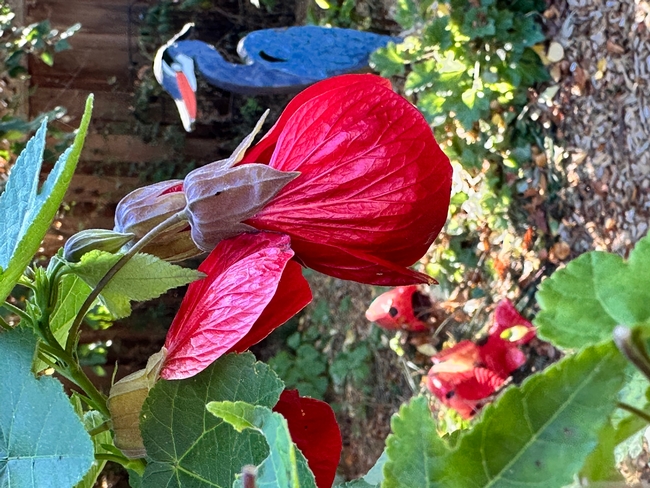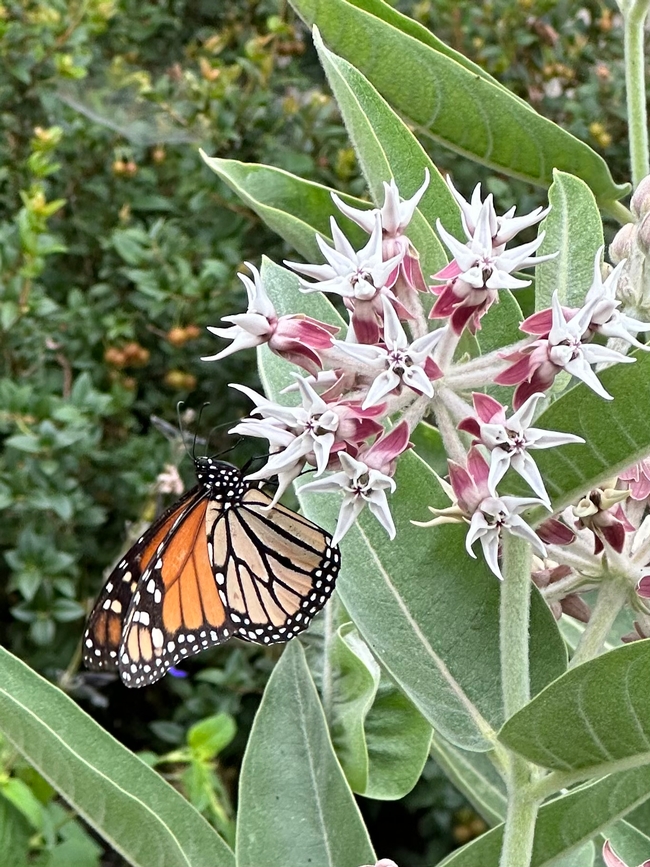When I was chatting with a few fellow gardeners at the recent plant exchange, the conversation turned to plants we wished we hadn't planted because they turned out to be too invasive for our gardens. Given our different microclimates in Solano County and irrigation practices, a well-regarded plant in one person's garden can be an unruly pest in another's. Here are the top three plants in my garden that I had to remove . . . and couldn't. (At least not for a very long time!) Do you have any plants to add?
Abutilon. Abutilon hybrids, commonly known as flowering maples, Chinese lanterns, or Chinese bellflower, are a large group of flowering perennials in the Malvaceae family. They are evergreen plants that range in height from 18 inches to 10 feet, providing a wide variety of landscape forms from shrubs to trees. The plants have large, bell-shaped flowers in a variety of mostly warm colors, including yellow, orange, pink, and red. They grow in sun and part shade (in hotter areas).
I planted my beautiful Abutilon in a partly shaded, narrow side yard as an espalier with the intent to enliven a narrow, otherwise barren, passageway. And it worked! The plant was lovely, it bloomed well, and it was easy to control in the narrow space. But, oh, the white flies! Every time I walked down the side yard it was like walking through a blizzard. I tried every method of pest control possible, to no avail. (Fortunately, the white flies didn't affect the rest of my yard.) I reluctantly concluded that if the white flies were happy, then the plant was unhappy despite its generally healthy appearance. And I was certainly unhappy with the white fly infestation. I removed the plant. Or so I thought . . . . That plant sent up new stems for over 5 years, and perhaps as long as 8 years. It was a constant battle to remove it for good. The plant couldn't fight whiteflies, but it certainly fought my efforts to eradicate it! Since then, I have longingly eyed other Abutilon plants, but I feared that if I planted another in a different location then I would have to live with it forever. I finally succumbed to temptation recently and planted a small shrub in a container. Thus far, we are both happy and I haven't seen any whiteflies.
Japanese anemone. When visiting a friend's house, I fell in love with the graceful blooms of their Japanese anemones massed in front of their house. I didn't notice, however, that the plants were planted within a concrete barrier that must have limited their spread. After planting my own patch, I then engaged in a lengthy battle to constrain the plants from moving into the rest of my yard. The plants propagate by underground rhizomes and I had read that it is easy to control them by removing new growth. That wasn't my experience. Even removing rhizomes didn't work, perhaps because I may have missed some segments. I would love to grow Japanese anemones and even though I understand that there are some less invasive varieties, I won't plant them again without installing some sort of barrier.
Showy milkweed. My current battle is with what I believe is Showy milkweed (Asclepias speciosa). A landscape designer selected this plant for the pollinator section of my garden and I've regretted the choice ever since. Yes, I am thrilled to feed Monarch caterpillars, watch them grow, and then admire the butterflies flitting about the yard, but it turns out there are far less invasive species of milkweed. This 4' tall species spreads by seeds and by underground rhizomes that form an expanding clump. In my yard, the rhizomes are buried over 8” deep, which makes them difficult to dig out completely when they are growing near other plants or irrigation lines. I try to pull the tender shoots as soon as they grow, but they return as soon as I turn my back. By midsummer, they have won the race. At best, my only hope now is containment.
I tried to eradicate the plants because they are in the wrong location and seem unhealthy (which may be a good thing because otherwise they would spread even more). The plants are tall and floppy and, no matter how much I tie them upright, they tend to keel over and crush my desirable plants. Because they spread so quickly and vigorously, an entire planting area is at risk of being taken over. Also, aphids love these milkweed plants and they become so thickly infested that no amount of pest management has helped. On the bright side, the ladybugs are having a feast.
There are other candidates for placement on this list (pineapple sage!). As always, the lesson I've learned is that it is important to research before planting and to be realistic about one's ability and willingness to monitor and control aggressive plants. Each plant is a learning experience!
Attached Images:

